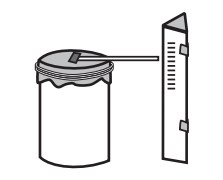In this activity, students use their knowledge about air pressure to build a barometer, an instrument that measures atmospheric pressure, which ia also known as barometric pressure.
Air pressure is affected by temperature and density (i.e. how many air particles in a particular space).
The Sun heats the Earth unevenly. When air is heated by the Sun, the air particles move faster and expand. This reduces its density relative to the cooler air around it, causing it to float upwards and leaving a low-pressure gap below it. Surrounding higher-pressure air will want to rush in and fill in the low pressure gap, which we feel as wind.
Wind is the flow of air from a high pressure zone to a low pressure zone. Air always flows from a high pressure zone to a low pressure zone. To help students remember the direction of air flow, they can use the phrase “Winds blow from high to low".
A barometer works by sealing a chamber of air with a material that can expand or contract. The flexible material caves in or bulges outward depending on whether the higher pressure is inside or outside the chamber.
If the air outside has a higher pressure, it will push into the lower pressure zone inside the barometer; it pushes down on the flexible material. If the air pressure outside is lower, the trapped air inside the barometer pushes up into the lower pressure air; it pushes the flexible material up.
A needle, attached to the flexible material, will deflect upwards if the pressure outside is higher. The needle will deflect downward if the pressure inside is higher.
In a low-pressure region, warm air expands, rises, cools, and loses its ability to hold its water vapour. This forms clouds (condensation), often leading to rain. In a high-pressure region, cool air contracts, sinks, warms, and gains the ability to carry water vapour (evaporation). This leads to clear and sunny skies.

By tracking the movement of a barometer, we can predict the weather that will be entering our area in the next week.
While tracking the movement of the homemade barometer you could also have students take photos or bring in newspaper clippings of local weather maps.


 copy.jpg)